On Stellaris (2.02): Changing the System
Stellaris’ 2.0 update was utterly unprecedented. In my memory, a 4X game has never shuffled and refined quite so many established game features as this game’s Cherryh 2.0 update wrought. 2.02’s balance fix came both optionally and quickly, and that’s what I’ve been playing of late.
It was an oddity then, that Apocalypse, with its late-game planet-cracking devices, late-game giant battleships and more options made available through the game’s ascension system — a top echelon to a perk system — launched alongside an extensive, fantastic, foundation-shaking update. Strange timing, for sure.
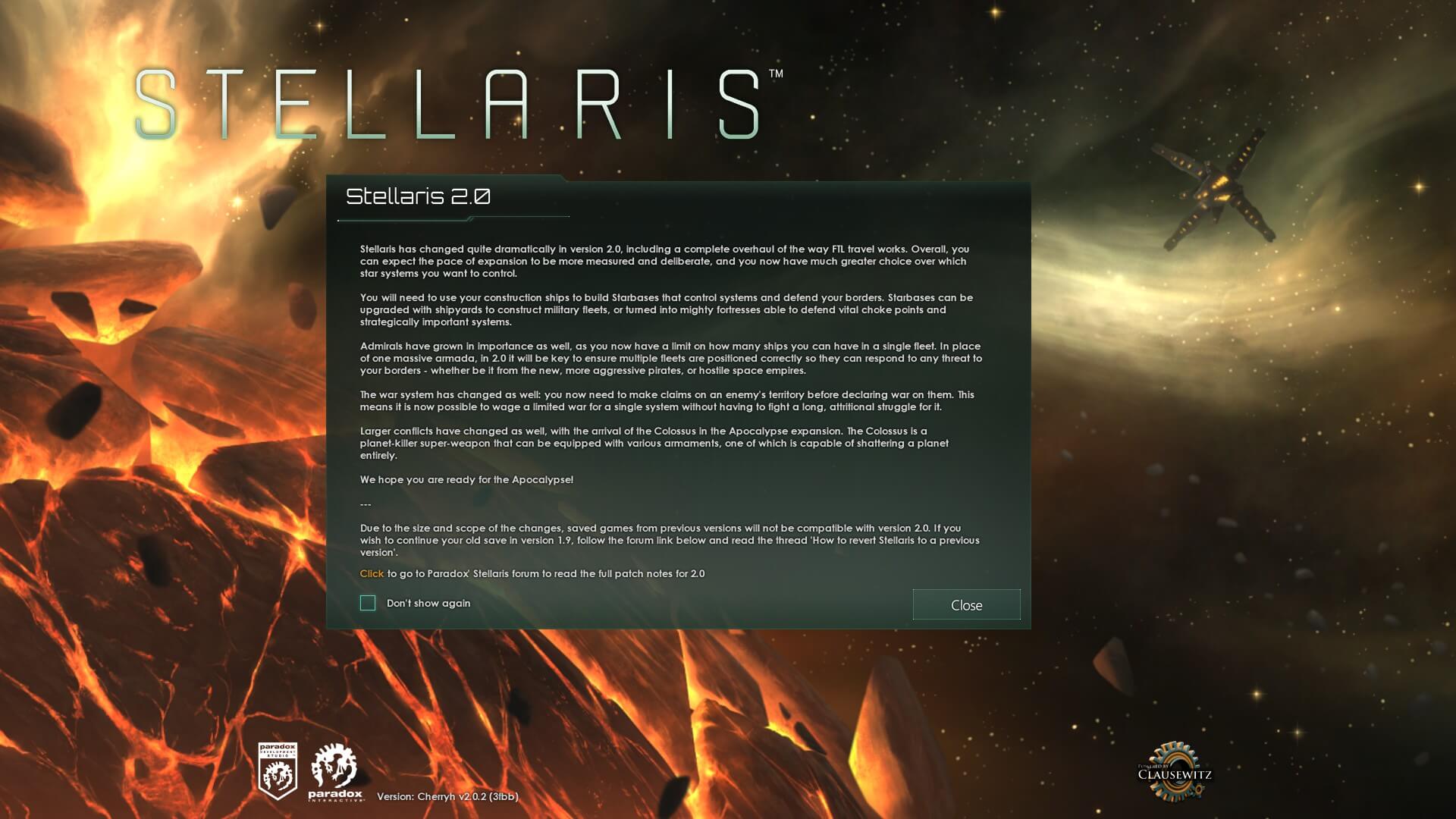
Apocalypse also brought organised pirate marauder factions. A group of kindly, charitabl… whew, they’re gone… A new type of purely militaristic space foe which floats around space, occasionally stopping to shake people down for pocket money/resources. Essentially the hordes of Crusader Kings II, but with the ability to transcend borders. Unlike the majority of the expansion content, the marauders are a pain in the wallet from the early game right through to the end; especially so if they unite into the new mid-game crisis where a great leader unites the factions and start a grand campaign.
The Cherryh 2.0 update, then, operates at a completely different level to Apocalypse. Where the expansion focuses on that late game bloom of chaos, the update sees most major changes happen in the first half of the game; through travel and through the game’s war system. Travel was, previously, an affair that could take place in one of three ways: Hyperlane, where you could only travel along set paths; Warphole, where you could fold space to travel from station to station; and FTL, which was very much ‘old faithful’, a method which saw players increase their drive capacity to jump further and further in classical, measured space, between jumps. War was, previously, a case of pushing until they surrendered — a case of conquest and advancement.
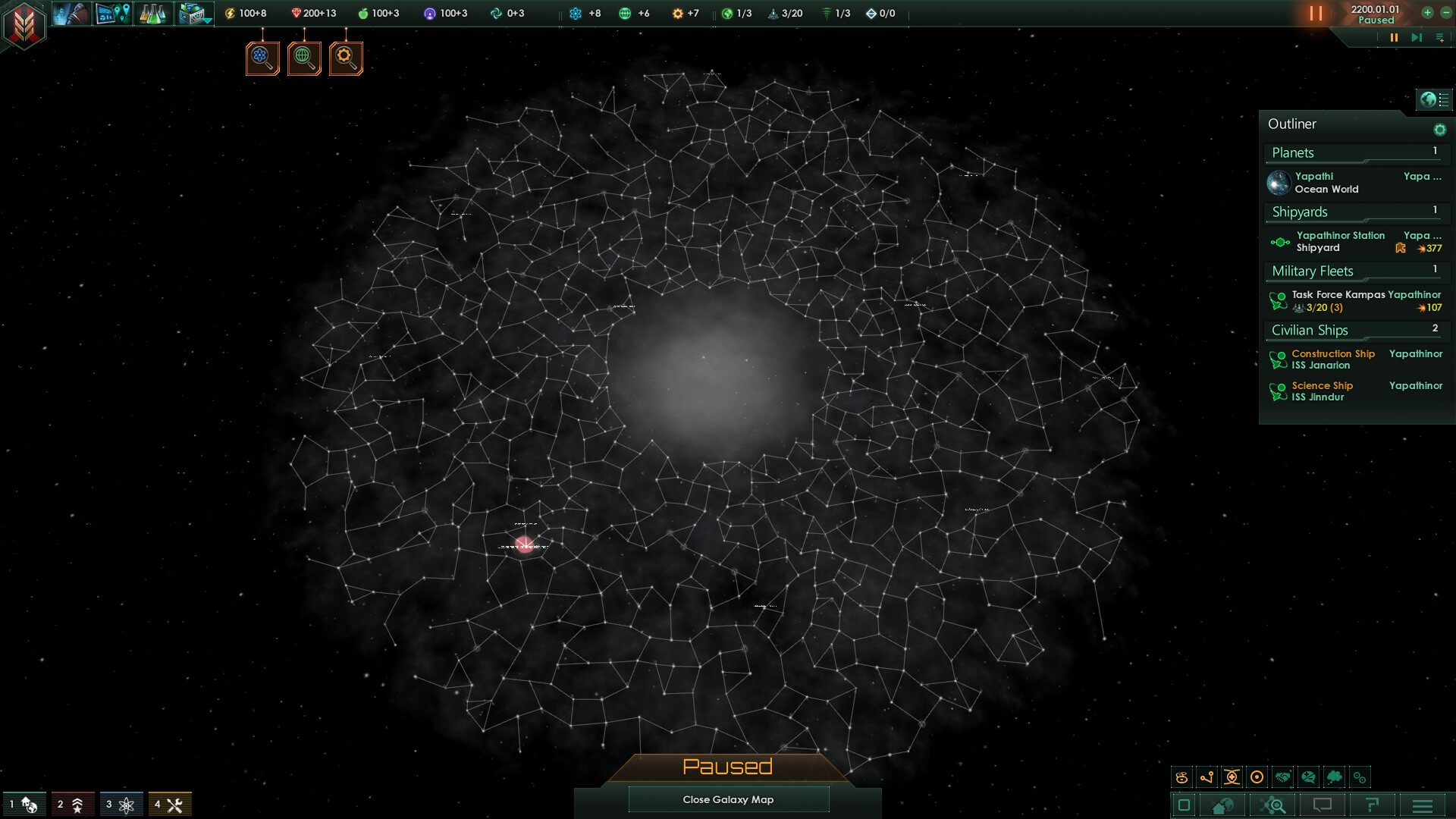
Travel in the post-Cherryh world has seen Hyperlanes completely refined. No longer are they the galaxy’s arteries, but have instead changed so that on generation, they blossom to cover every system, no matter how remote. This means that FTL, a now late-game technology, is both a slower method of getting around and a more tactful one. Due to Hyperlane’s promotion to the main method of transport, new tweaks to defensive platforms have become critical. Bottlenecking enemies is now viable. Select routes and passageways have become more critical to guard. In short, the game has gone from one where you drag your single-group space force around the web of planets you own to fight baddies to one where it’s best to have multiple fleets — and pump some money into defences.
Control of the galaxy is no longer a case of being the first to colonise a planet or the one with a controlled system nearest. Instead, it’s down to who maintains the station around the star; something which takes effort to build, but is militarily easy to flip if undefended. Having to build stations makes the crawl through the galaxy a lot more linear, a snaking construction effort through the stars, especially versus the previous, proximity-based system, although it does give maps more structure and shape — especially the spiral systems. In addition to this, the stations are upgradeable, allowing you to gate bottlenecks, forming choke-point defence, making neighbourly contact a much more involved affair.
War, then, has also undergone some serious changes. One of the main 2.0 updates was war exhaustion and an auto-concession after a sufficient trampling. In Stellaris this is a strange thing, as the Federation system ensures that even when down, you’re rarely out (ergo the late-game crisis). Previous games have seen me — and my Federation — purportedly beaten into obedience, dozens of planets conquered, armies and fleets decimated, and yet we’ve managed to turn the fight around, albeit to a somewhat Pyrrhic victory. Thankfully the auto-concession was removed sharpish with the 2.02 update — something which has made war exhaustion, undoubtedly familiar to Europa Universalis fans, a welcome addition to the game. Fifty-year wars, even when I hold enemy core systems? Begone.
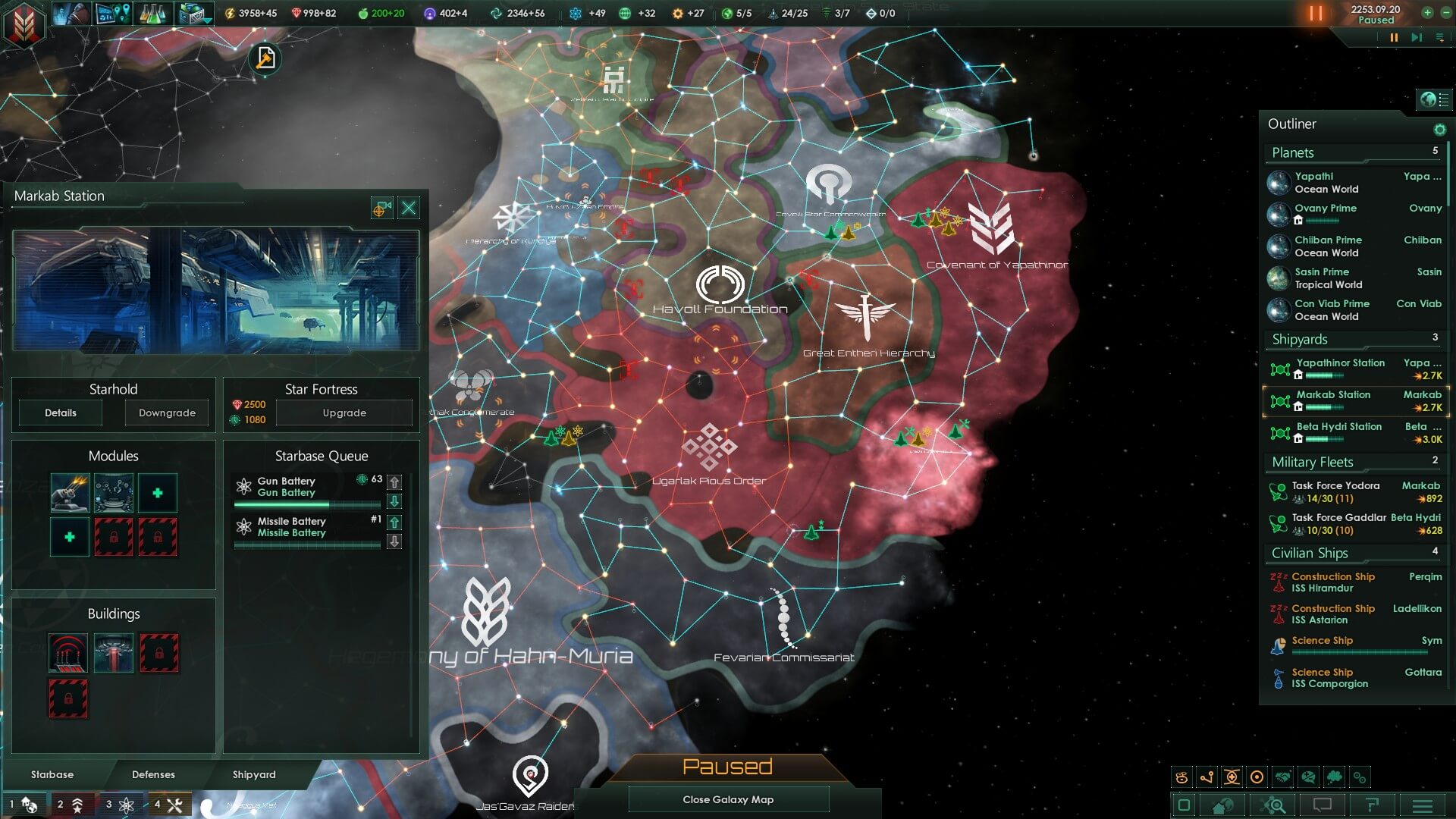
When I originally set out to write this piece, I had intended to spend a little bit more time talking about the race I had chosen to play — a Fennec-esque theocratic republic, kind and charitable, although in possession of a fallen, enslaved gekko-esque group who worked as willing underlings. However, the Photecian’s journey along the galaxy’s hyperlanes are probably not of interest to those who are reading. You’ve already, probably, played the 4X game or others of its genre before.
What is probably of interest, however, are the adaptions I needed to make to my playstyle to get going with the new, revised 2.02 version.
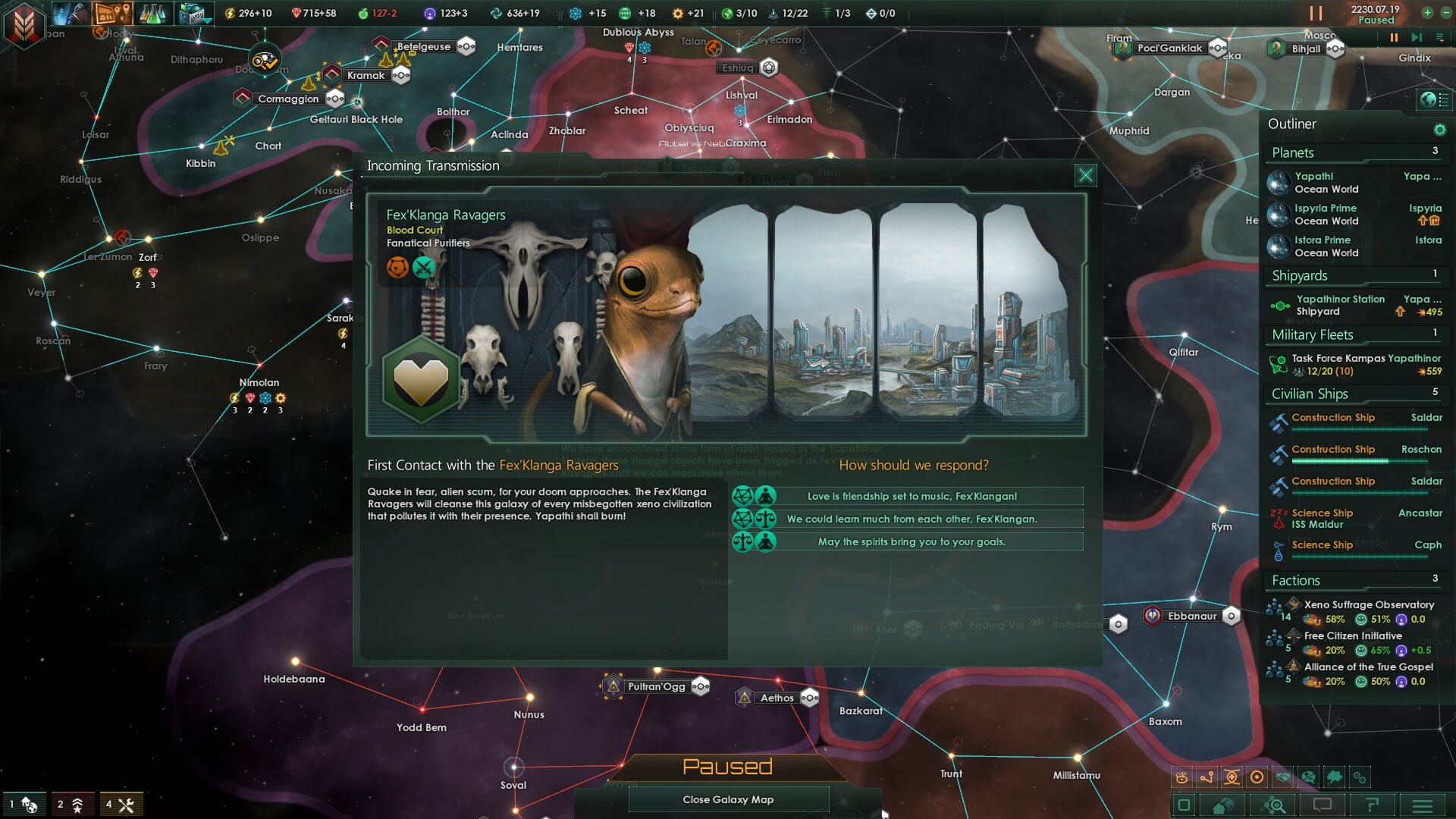
The travel changes were enough to be similar, for want of a better comparison, to starting a new Civilization series entry. As we plunge through the Civ, series we go from population to gold, to happiness, to all-sorts being the core currency for maintaining a large empire. In classic Stellaris, this was most definitely balanced evenly between keeping an eye on maintenance (Energy), disposable (Minerals) and growth (food) resources among the rest. Post-2.0 I found, in my first two games, that the shift had definitely moved onto energy. As each progressive station bounded into the marginally-known, as I demanded reinforcements for my shattered fleets or as I attempted to increase my civilian vessels, the energy consumption rocketed in a previously-unseen manner. Outposts, the most basic system-claiming building, come in at around 3 energy cost each, which certainly stacks up fast. In previous games I had focused on minerals, something which was now redundant, as the whole system had been shaken up. My generous stockpile had kept the marauders off me for a time, but they’d returned. In time the pirates, and the growing capital population — which eventually separated from me after expanding beyond our food threshold — saw me ultimately overthrown and left out in the cold.
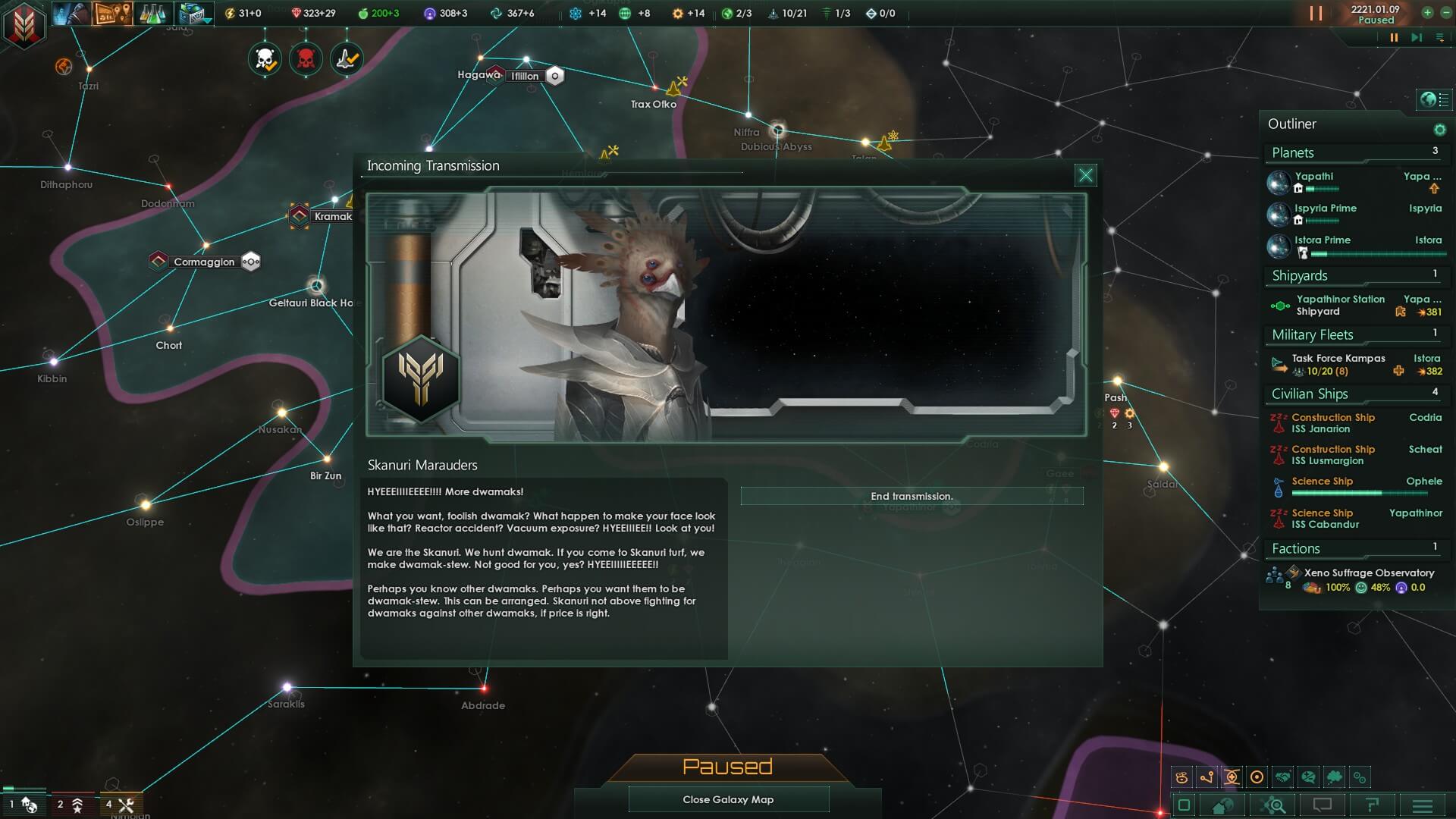
My next foray into the game saw me overcompensating on the energy front, reaching mid-game ahead of my normal curve, but with a twisted, warped empire splattered out like a squashed frog. The ability to build defensive stations from star-stations was especially welcome, and together myself and my federation started to win battles in my favour, leaving me with a space empire much more rotund and shapely than I started. That said, we were absolutely trounced by Space Khan when he and his horseback archers battleships started cutting arms off of my federation allies.
I’ll keep the chattering on my playthrough short, but I hope that I’ve — at least — managed to convey the great shift that the 2.0 update brought forward. Personally, I’ve enjoyed the challenge of relearning the balancing act of expansion, but, mostly I’m impressed at the fact that Paradox have dared to make such major changes to the game nearly two years after release.
Stellaris, and Stellaris: Apocalypse, are available through the Paradox Plaza store, or through Humble Bundle — where, at time of posting, the core game is on deal.
Comments are closed.